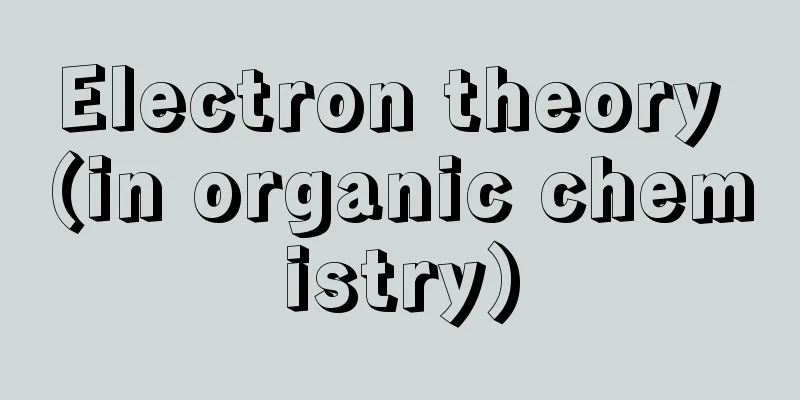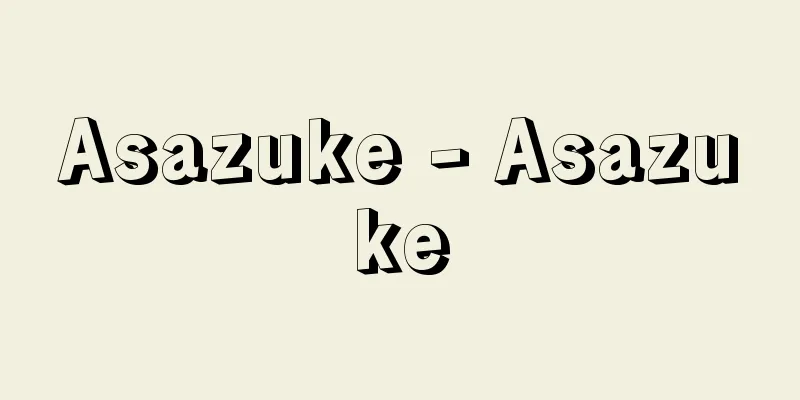Electron theory (in organic chemistry)

|
A theory that attempts to understand the properties of organic compounds and organic chemical reactions through the behavior of the electrons that make up the compounds. It is also called the organic electron theory. This theory was developed mainly by R. Robinson and Ingold in the UK, and was strongly influenced by the resonance theory of the American Pauling. In organic electronic theory, the chemical bonds that make up organic molecules are classified as σ (sigma) bonds and π (pi) bonds, and the electrons that belong to these bonds are classified as σ electrons and π electrons. The reaction behavior of electrons in organic molecules is then classified into a static state in which the molecule is not involved in the reaction and exists in isolation, and a dynamic state in which the molecule interacts with other molecules (is involved in the reaction). Due to the displacement of electrons in organic molecules, the distribution of electrons in the molecule becomes uneven, and atoms with many electrons have a negative charge, while atoms with few electrons have a positive charge. This phenomenon is called polarization. In organic electronic theory, the polarization of bonds (and molecules) is evaluated as follows: (1) polarization due to the static inductive effect (also called the I effect) on the entire valence electrons caused by the difference in electronegativity of atoms, (2) static polarization caused by the resonance effect (also called the mesomeric effect or M effect) specific to π electrons, and (3) dynamic polarization due to the polarizability that temporarily occurs in molecules during reactions ( ). The I effect is polarization caused by the difference in electronegativity between the two atoms that make up the bond, polarizing the atom with the greater electronegativity to a negative charge and the atom with the lesser electronegativity to a positive charge. The M effect is the contribution of π electrons to polarization, and is evaluated by drawing the limiting structures (resonance structures) and examining the distribution of positive and negative charges in the polarized limiting structures. The I effect and the M effect can be superimposed to determine the static electronic properties of the molecule. Below, we will explain the application of organic electronic theory using chlorobenzene as an example. Since chlorine has a higher electronegativity than carbon, the I effect polarizes the C-Cl bond so that chlorine is negative and carbon is positive. In this polarization, electrons are only partially biased toward the chlorine side, and chlorine is not completely anionized and carbon is not completely cationized, so we add δ (delta) and express it as C δ+ -Cl δ- (δ is smaller than 1). In addition, due to resonance (mesomerism) between the 2p electron, which is the non-shared electron pair of the chlorine atom, and the π electrons of the benzene ring, an M effect occurs in which electrons move from the chlorine atom to the ortho and para positions of the benzene ring. The properties of chlorobenzene can be well explained as a combination of the I effect and the M effect. So far, we have been explaining static polarization, but when actually considering organic chemical reactions, we must take into account the interactions between organic molecules and other molecules (reagents). Polarization caused by the approach of other charged reagent molecules during a reaction is called dynamic polarization, and the magnitude of dynamic polarization is determined by the polarizability. Aromatic substitution reactions, in which electrophiles (cations) or nucleophiles (anions) attack organic molecules, can be explained by the polarization theory discussed above. In the case of the nitration of chlorobenzene, the reaction proceeds through electrophilic attack of the nitronium ion NO 2 + on the π electron system, so it is predicted that the reaction will occur at the ortho and para positions, which are negatively charged due to the M effect, and in fact the ortho and para isomers of chloronitrobenzene are obtained ( ). The theory of organic electrons has been widely applied because it is useful for understanding various organic reactions in terms of the movement of valence electrons, but it has the disadvantage that the discussion is qualitative. Currently, a new electronic theory based on molecular orbital theory is being applied to the elucidation of organic reactions, replacing the theory of organic electrons. [Mr. Hirota November 18, 2016] "Imoto Minoru, 'Commentary on Organic Electronics -- Fundamentals of Organic Chemistry', 4th Edition (1990, Tokyo Kagaku Dojin)" ▽ "Organic Chemistry Concepts -- Organic Electronics" edited by Toshihiko Migita, Kozaburo Nishiyama, Masami Ikkuni, Shohei Inoue, Yasuhiro Iwasawa, Yuji Ohashi, Akira Sugimori, and Kei Watanabe (1997, Shokabo)" [References] | | | | | | | | | |©Shogakukan "> Classification of polarization effects according to organic electronic theory [Table] ©Shogakukan "> Polarization of chlorobenzene (Diagram) Source: Shogakukan Encyclopedia Nipponica About Encyclopedia Nipponica Information | Legend |
|
有機化合物の性質と有機化学反応を、化合物を構成している電子の挙動により理解しようとする理論。有機電子説ともいう。イギリスのR・ロビンソン、インゴルドらを中心として展開された理論で、アメリカのポーリングによる共鳴理論の影響を強く受けている。 有機電子論においては、有機分子を構成する化学結合をσ(シグマ)結合とπ(パイ)結合に区別して、これらの結合に属する電子をそれぞれσ電子とπ電子に分けて論じる。そのうえで、有機分子中の電子の反応挙動を、分子が反応に関与せず孤立して存在している静的状態と、他の分子と相互作用をしている(反応に関与している)動的状態に分けて取り扱う。 有機分子中の電子の変位により分子中の電子分布は均等でなくなり、電子が多く集まる原子は負電荷をもち、電子が希薄になる原子は正電荷をもつようになる。この現象を分極とよんでいる。有機電子論では、結合(や分子)の分極を、(1)原子の電気陰性度の差により生じる価電子全体に対する静的誘導効果(誘起効果、I効果ともいう)による分極、(2)π電子に特有な共鳴効果(メソメリー効果、M効果ともいう)により引き起こされる静的分極、(3)反応の際に分子に一時的に生ずる分極率による動的分極に分けて評価する()。I効果は、結合をつくっている両原子の電気陰性度の差に起因して生ずる分極で、電気陰性度が大きいほうの原子が負電荷をもち、電気陰性度が小さいほうの原子が正電荷をもつように分極する。M効果は、分極に対するπ電子の寄与分であり、限界構造式(共鳴構造式)を書いて、そのうちで分極した限界構造式での正負の電荷の分布から評価される。I効果とM効果を重ね合わせると、その分子の静的な電子的性質がわかる。 以下に、クロロベンゼンを例として、有機電子論の応用について説明しよう。塩素のほうが炭素に比べて電気陰性度が大きいので、I効果によりC-Cl結合は塩素が負になり炭素が正になるように分極している。この分極では電子が部分的に塩素側に偏って存在するだけで、完全に塩素が陰イオン、炭素が陽イオンになっているわけではないので、δ(デルタ)をつけてCδ+-Clδ-のように表す(δは1よりも小さい)。これとは別に、塩素原子の非共有電子対(つい)である2p電子とベンゼン環のπ電子との共鳴(メソメリー)により、逆に塩素原子からベンゼン環のオルトとパラの位置に電子が移動するM効果がおこっている。クロロベンゼンの性質はI効果とM効果をあわせたものとしてよく説明できる。 いままで静的分極について説明してきたが、実際に有機化学反応を考える場合には、有機分子と他の分子(試薬)との相互作用を考慮に入れなければならなくなる。反応の際に他の電荷をもった試薬分子が接近することにより引き起こされる分極を動的分極といい、動的分極の大きさは分極率によって決まってくる。 有機分子に対して求電子試薬(陽イオン)や求核試薬(陰イオン)が攻撃する芳香族置換反応は、これまで述べた分極により説明できる。クロロベンゼンのニトロ化の例では、ニトロニウムイオンNO2+によるπ電子系への求電子的攻撃により反応が進行するので、M効果により負の電荷を帯びているオルトとパラの位置におこると予測されるが、実際にもクロロニトロベンゼンのオルトおよびパラ異性体が得られている()。 有機電子論は、種々の有機反応を価電子の動きにより理解するのに便利であるので、広く応用されてきたが、議論が定性的であるという欠点をもっている。現在では、有機電子論にかわり、分子軌道法を基礎とした新しい電子理論が有機反応の解明に応用されている。 [廣田 穰 2016年11月18日] 『井本稔著『有機電子論解説――有機化学の基礎』第4版(1990・東京化学同人)』▽『右田俊彦編著、西山幸三郎著、一国雅巳・井上祥平・岩沢康裕・大橋裕二・杉森彰・渡辺啓編『有機化学の考え方――有機電子論』(1997・裳華房)』 [参照項目] | | | | | | | | | |©Shogakukan"> 有機電子論による分極効果の分類〔表〕 ©Shogakukan"> クロロベンゼンの分極〔図〕 出典 小学館 日本大百科全書(ニッポニカ)日本大百科全書(ニッポニカ)について 情報 | 凡例 |
Recommend
Uthman (English spelling)
[Born] 574, Mecca [Died] June 656. The third calip...
National Aeronautics and Space Administration; NASA
The central organization for the United States'...
Trichocoma paradoxa Jungh.
A mushroom of the Aspergillus family of irregular ...
Sakaigawa
A river that flows through central Kanagawa Prefec...
Tiger shark - Scyliorhinus torazame
A marine fish of the family Scyllidae in the order...
Gunnai Soudou - Gunnai Soudou
A peasant uprising that began in the Gunnai region...
oz ap (English spelling) ozap
...symbol dwt). (3) The apothecaries' ounce i...
Doping
When athletes use drugs during competitions. From ...
Hairpin - Kanzashi
A type of hair ornament. In the Asuka and Nara per...
Muḥammad b.Ali (English spelling)
...After the revolt was put down and Muhammad die...
Danger lover - kikenai kosha
The term risk premium refers to the difference be...
Work Accident - Work Accident
Accidents such as injury, illness, and death that ...
AIT - AIT
…The history of cycling began with the invention ...
Nevel'skoi, GI (English spelling)
...Population: 36,500 (1992). Founded in 1850 by ...
Moḥammad Reḍā Pahlavī
1919‐80 The last king of the Pahlavi dynasty. Reig...









